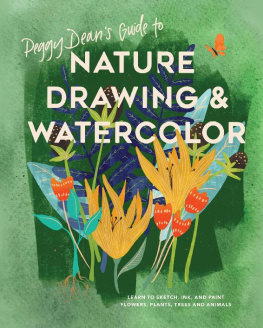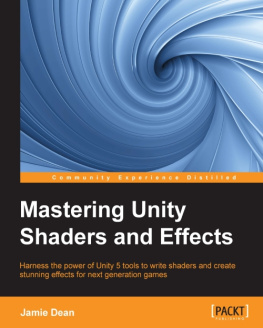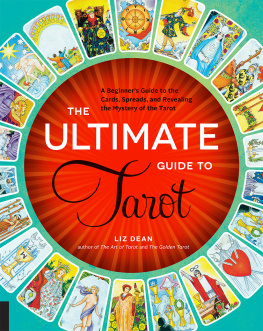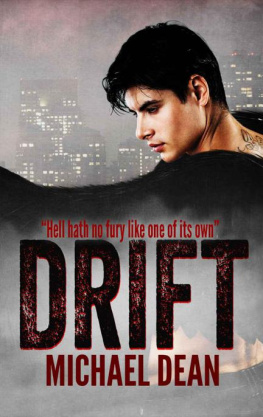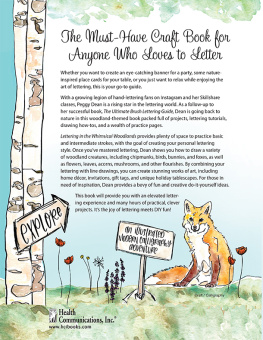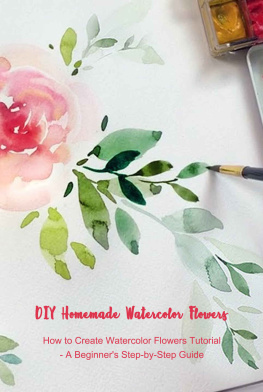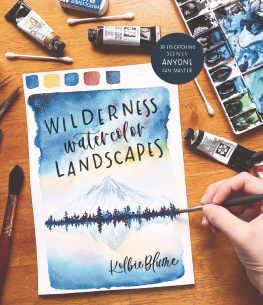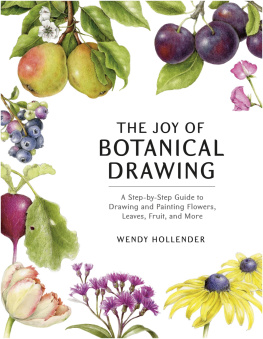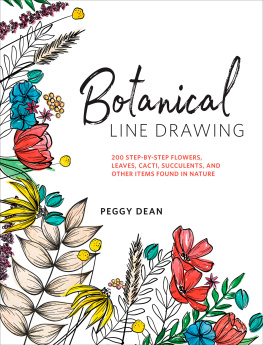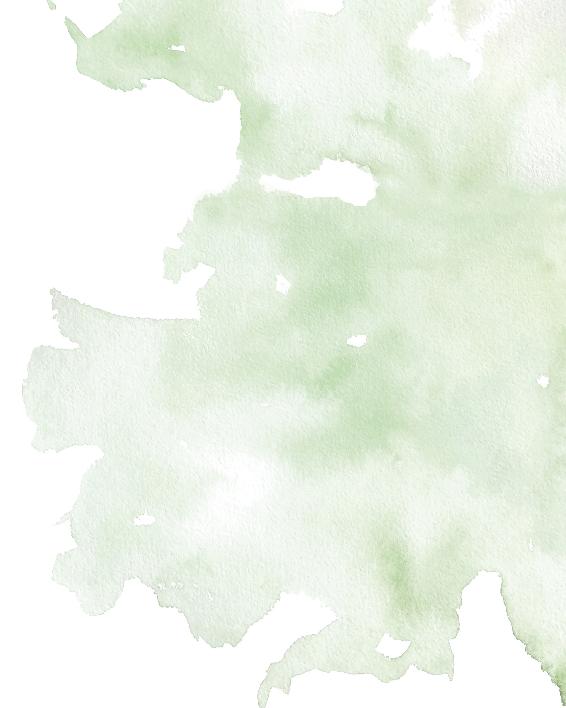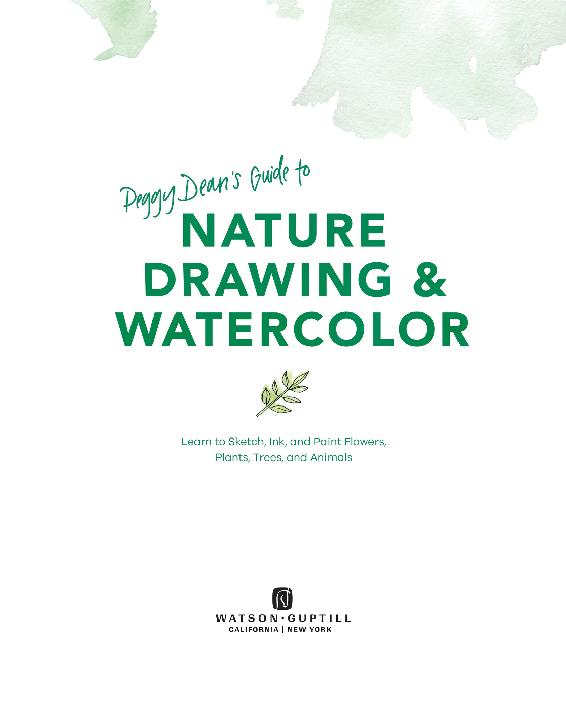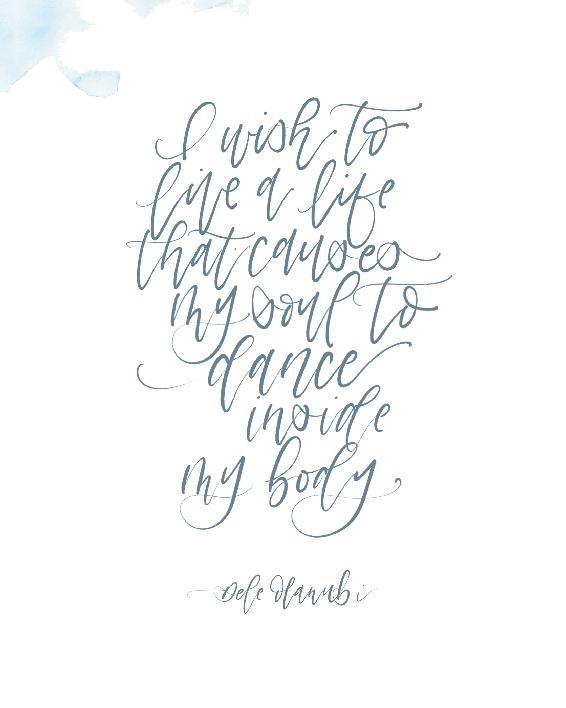Copyright 2019 by Peggy Dean.
All rights reserved.
Published in the United States by Watson-Guptill Publications, an imprint of the Crown Publishing Group, a division of Penguin Random House LLC, New York.
www.crownpublishing.com
www.watsonguptill.com
WATSON-GUPTILL and the HORSE HEAD colophon are registered trademarks of Penguin Random House LLC.
Library of Congress Cataloging-in-Publication Data
Names: Dean, Peggy (Illustrator), author.
Title: Peggy Deans guide to nature drawing and watercolor: learn to sketch, ink, and paint flowers, plants, trees, and animals /Peggy Dean.
Description: California : Watson-Guptill, [2019] | Includes bibliographical references and index.|
Identifiers: LCCN 2018038938 (print) | LCCN 2018039576 (ebook)Subjects: LCSH: DrawingTechnique. | Watercolor paintingTechnique. | Nature in art. | BISAC: ART / Techniques / Pen & Ink Drawing. | ART /Subjects & Themes / Plants & Animals. | SELF-HELP / Creativity.
Classification: LCC NC825.N34 (ebook) | LCC NC825.N34 D43 2019 (print) | DDC 741.2dc23
LC record available at https://lccn.loc.gov/2018038938
Trade Paperback ISBN9780399582158
Ebook ISBN9780399582165
v5.3.2
prh
CONTENTS
Part One
Part Two
Part Three
Part Four
INTRODUCTION
I cant drawseriously. Its not something youd expect to read from the author of a book you pick up to learn about drawing, but a couple of years ago, if Id been asked to sit down, look at a blank piece of paper, and draw, it would have been hard for me to make expressive stick figures. I maybe could have done a flat daisy shooting out of some choppy lines that Id try to convince you was grass (it was that bad). So if I cant draw and you cant draw, lets not know how to draw together.
Heres the thing: Drawing is all about viewing your subject differently by breaking it up into lines and shapes. Step-by-step illustrations create muscle memory and allow our skillsets to expand and, in turn, this muscle memory and skill helps us create our own masterpieces.
If I can draw, trust meyou can definitely draw.
I remember an afternoon when I was young. My cousin was visiting our house, and the art supplies were out. We were on our knees, with well-used crayons and streaky markers, using the piano bench as our art table. I dont know why that was the surface we decided was best to draw onmaybe we couldnt wait to dive in, maybe my brothers five million Legos were taking up other surfaces, or maybe we wanted to be near my mom while she cleaned. No, I remember whywe were kneeling over the piano bench and drawing because my cousin was trying to get away from me and the bench was her final destination before she gave up. She was older than me and I admired her; I wanted to draw what she was drawing. I remember she formed faces and dresses and shoes differently than I did, and I was desperate to learn a new style. So I hovered over her shoulder and watched with laser focus, memorizing every stroke.

When I was growing up, my mom enrolled me in lots of art programs so I could dabble in different media, and I loved all of them. But the problem with a lot of art programs for children is that theyre so guided. Although I was young, I felt stifled by the over-instruction. I didnt think I had my own creativity or that I could draw anything without copying something else.
In my late teens, I could be found outside at the patio table until the wee hours of the morning after convincing a group of friends to have a paint party. This was one of my favorite activities. The only thing missing was that I never painted anything original. Every single piece I painted used something else as a reference, which wasnt satisfying. I needed more. Thats when I decided to take ownership of my own creativity and to embrace learning through the discouraging journey of trial and error. Because Ive always been attracted to creating, the journey became a need.
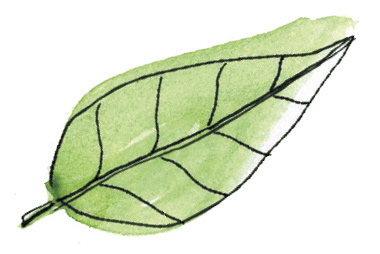
Lets get personal for a second and think about why we create art to begin with. Unfortunately, as we near adulthood we tend to stray from some of the things that used to bring us so much joy in our younger years. In turn, we lose our creative outlets and find other ways to cope with everyday stresses. I found myself scrolling social media and sites such as Pinterest for far too long, or wasting my time watching television, never creating anything. Mindful practices were practically nonexistent in my life. Then one day, I met my biggest trigger Rejection. Rejection and I dont get along, and Rejection makes me destructive; at least then I feel in control. This one day, though, I decided that instead of internalizing the emotions that stemmed from Rejectionwhich I knew would result in me putting up walls and stifling my progress in generalI sat down on the couch and picked up some old watercolors and a cheap pad of mixed-media paper. I started to paint without reference, without thoughts. I started to paint what came to mind, and in little time, I felt fullconnected to myself, to my emotions, and to my journey. Every night for two more months I painted, without trying to better my skillset or worry about progress. I did it for me. I did it to heal. I fell in love with the child that still lives within, the one I quieted when I became an adult. I had found my outlet again. Once I felt connected to why I was creating, I wanted to learn and absorb as much knowledge as I could to expand what I could create. It was then I realized that I had truly found my version of mindfulness. Now it was time to explore.
Ive been heavily inspired by the nature around us. Coexisting on this planet with so many amazing plants and animals and inspiring colors is incredibly grounding, so to speak. Nature is imperfectly perfect, which is something I fully embrace and adopt in my art. Rough edges, asymmetry, texture, explorationthese are the features that translate to so much character on paper. Let yourself breathe and release the need for perfection. Let yourself grow.
Self-Taught
I have found that being self-taught is a long, difficult process chock-full of mistakes. Youre getting less excited, arent you? Bear with me. This is good stuff, I promise. When you want to learn something on your own, passion is the most important thing you need. Without passion, youre likely to go through the motions, lose interest, and feel as if the process has become a chore that will eventually fall by the wayside and likely never surface again. But passion sparks a drive inside of us that we dont have control over. It ignites us and we have nowhere to go but up.
During the process of most illustrations, I dont like my work. Ask any designer or artist about this and youll likely hear that the process is the hardest because we want to see the end result but were stuck looking at our incomplete meh work. While you practice your drawing skills, I challenge you to persevere through this very natural stage of creation. I find that the work I dislike the most during the process is the work I end up loving and reusing over and over again. I also encourage you to take breaks if you feel stuck or that youre butchering your drawing. Trust me, you will feel this way at some pointwe all doand its just as much a part of the process. Stand up, do something else, and come back to it. Returning to your work with fresh eyes will jumpstart your motivation because youll see that your progress has actually been pretty impressive after all.

